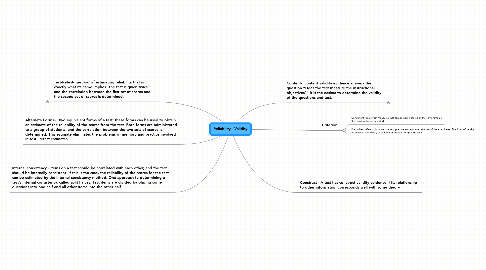Reliability - Validity
by Jennifer Goodell-Bean

1. Content- content validity evidence answers the question “Does the test measure the instructional objectives?" It is the easiest to determine the validity of the questions and test.
1.1. New node
2. Criterion
2.1. Concurrent- deals with measures that can be administered at the same time as the measure to be validated
2.2. Predictive- refers to how well the test predicts some future behavior of the examinees. This form of validity evidence is particularly useful and important for aptitude tests.
3. Construct - A test has construct validity evidence if its relationship to other information corresponds well with some theory.
4. Test-Retest- method of estimating reliability that is exactly what its name implies. The test is given twice and the correlation between the first set of scores and the second set of scores is determined.
4.1. New node
5. Alternate Forms - two equivalent forms of a test, these forms can be used to obtain an estimate of the reliability of the scores from the test. Both forms are administered to a group of students, and the correlation between the two sets of scores is determined. This estimate eliminates the problems of memory and practice involved in test –retest estimates.
6. Internal consistency - items on a test should be correlated with each other, and the test should be internally consistent. If this is the case, the reliability of the scores for the test can be estimated by the internal consistency method. One approach to determining a test’s internal consistency, called split halves. Test items are divided by placing some questions into one half and all other items into the other half.


